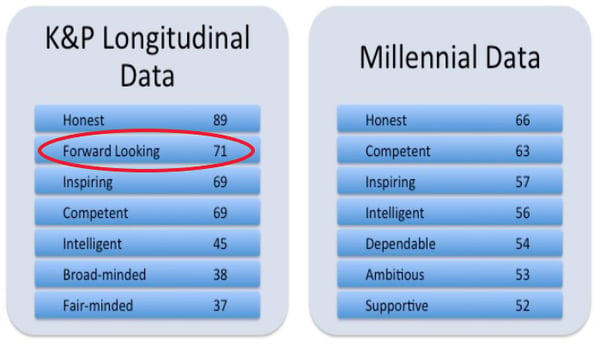
Generational differences are not new in human history. Significant societal changes – political, economic or otherwise – often bring generational preferences into tension, which are now amplified by the thousands of mass and social media outlets all scrambling for a few seconds of your time. If you feel like you are a target of incitement rather than a consumer of news these days, you are not alone.
The reality is that generational differences are often exaggerated, especially in the tech-fueled modern information age. The demands of life have generally followed the same pattern for thousands of years and they are unlikely to change with a single generation: we learn, grow, work and provide for our families throughout the many seasons of life and, yes, there are tweaks along the way. Isn’t it generally the same in our industry? Take a sawmill, for instance. New technologies have made sawing logs a much safer, efficient and profitable business, but a sawmill still performs the same essential function—still follows the same trajectory—that it has for hundreds of years: converting round trees into square boards.
This is how I tend to view the overhyped “generational divide.” In the end, we all are following a similar path and working towards the same basic goals. I am not a millennial myself, but I believe this cohort gets a particularly bad rap in both the marketplace and the workplace. We often hear that they are “lazy,” “self-absorbed,” “uncompromising,” “entitled,” etc. While this has not been my own experience, can you really blame them? In general, millennials have had to find creative ways to follow the patterns of life since:
- Only 41% of millennials work full-time
- 50% have less than $5,000 in savings
- Average student loan debt for a college graduate is nearly $40,000
- When adjusting for inflation, Millennials earn 20% less than their parents did
Millennials are the first digitally native generation, but that distinction has not markedly improved their quality of life. Technology has made certain aspects of modern life more accessible and convenient, but I would hardly say that millennials (or any younger generation) “have it easier” than I do. To be honest, I wouldn’t trade places with them… even on a good day.
The Leadership Vacuum
I recently came across related data that brought some high-level generational inclinations more clearly into focus, and which also forced me to think more pointedly about the future of labor trends and the forest products industry. We all hear the same challenges, if anecdotally, repeated across the forest supply chain: Loggers and harvesting crews on the front lines struggle to find young, eager and dependable workers; mill facilities can’t hold onto young workers; forestry is “outdated,” “boring,” or a career choice of a bygone era; wood products are not “environmentally sensitive,” etc.
which also forced me to think more pointedly about the future of labor trends and the forest products industry. We all hear the same challenges, if anecdotally, repeated across the forest supply chain: Loggers and harvesting crews on the front lines struggle to find young, eager and dependable workers; mill facilities can’t hold onto young workers; forestry is “outdated,” “boring,” or a career choice of a bygone era; wood products are not “environmentally sensitive,” etc.
More concisely, there has been a tremendous generational shift in the way millennials prioritize leadership traits in the workplace, which suggests that many industries, including the forest industry, are simply not reacting to changing employment dynamics.
Brittney Majka and Steve Coats completed some eye-opening research for The Leadership Challenge that really illustrates this knowledge gap. Using the Characteristics of Admired Leaders (CAL) research categories (e.g., ambitious, honest, competent, inspiring, forward-looking, supportive) that was developed by authors Jim Kouzes and Barry Posner, the two sought to identify if millennials looked for similar characteristics in leaders they admire compared to the overall historical findings Kouzes and Posner have been collecting for more than three decades.
While a good bit of overlap in preferred leadership qualities exists between the two datasets, one stark difference best exemplifies the shift in generational priorities. In the longitudinal data, “forward looking” is the second most important quality in a leader; in the millennial data, this trait is missing altogether.
 Source: The Leadership Challenge
Source: The Leadership Challenge
What conclusion can we draw from such a frank difference in priorities? Millennials value leaders who are focused on the near-term and the “here and now” because “forward-looking” suggests a preoccupation with the future and with commitment. In other words, millennials want to know what you can do for them right now and if it is unsatisfactory, they will simply move on. While this may seem shortsighted to older generations, it is the reality of the modern workplace and it has a significant impact on the business environment and the broader economy.
Majka offers a less pessimistic view rooted in semantics, however: “Why is ambition so important to millennials? Has ‘ambitious’ simply replaced ‘forward looking’ as the preferred language to describe an aspirational or future state? My personal opinion is that millennials equate ambition to ‘grit,’ as popularly coined by author and scholar Angela Duckworth in her book by the same name. With an economic recession already under our belts, we know what it’s like to have to fight for what you want—and we want a leader that’s willing to dream big and go to bat for us. Ambition implies action. And that’s the kind of intrinsic motivation we want surrounding us.”
While her assessment may help to explain the glaring difference in the data, Gallup Workplace research uncovered some further statistics that suggest a fundamental shift in the way millennials view the employee/employer relationship:
- “A recent Gallup report on the millennial generation reveals that 21% of millennials say they've changed jobs within the past year, which is more than three times the number of non-millennials who report the same.
- Millennials also show less willingness to stay in their current jobs. Half of millennials -- compared with 60% of non-millennials -- strongly agree that they plan to be working at their company one year from now. For businesses, this suggests that half of their millennial workforce doesn't see a future with them.
- 36% report that they will look for a job with a different organization in the next 12 months if the job market improves, compared with 21% of non-millennials who say the same.
- Gallup estimates that millennial turnover costs the U.S. economy $30.5 billion annually.”
What Jobs Do Millennials Want?
Millennials are the most highly educated demographic (for now), which helps explain the aversion to the monotony associated with lower skilled jobs. If a job feels like a dead end, millennials are quick to use their digital skills to formulate an exit plan and make job hopping simpler, or they are equally comfortable participating in the “gig” economy and working multiple freelance, part-time or temporary jobs; 1 in 4 millennials is now a part of the gig economy. However, the impact of this trend is costly for employers.
The costs associated with replacing an employee vary by wage bracket but they are significant, per a Center for American Progress study cited by PeopleKeep, a health benefits automation software provider, who notes that:
- 16% of annual salary for high-turnover, low-paying jobs (earning under $30,000 a year). For example, the cost to replace a $10/hour retail employee would be $3,328.
- 20% of annual salary for mid-range positions (earning $30,000 to $50,000 a year). For example, the cost to replace a $40k employee would be $8,000.
- Up to 213% of annual salary for highly-educated executive positions. For example, the cost to replace a $100k executive is $213,000.
Unlike older generations, earning potential doesn’t appear to be a primary driver for millennials in certain job categories. Other telling trends uncovered by financial technology company dailypay that carry implications for the forest products industry include:
- 64% of millennials said they wouldn't work in construction even if they earned $100,000 or more.
- According to a study conducted by Paychex, manufacturing has one of the lowest percentages of millennial employees (31.8%) of all industries.
- Leisure and hospitality have a high percentage of millennial employees (49.9%), but also pay the lowest wages ($15.51/hour).
Overwhelmingly, jobs that are less physically demanding and low paying are more attractive to millennials than high-paying jobs that are labor intensive. This represents a tremendous generational shift, and it creates real challenges for the forest industry moving forward.
Who will harvest and haul timber in the future? Who will cruise and manage timberland, and who will maximize and protect its natural resources? Who will operate, maintain and repair the complex pieces of mill equipment? Who will manage wood products logistics and exports? These are just a few of the questions that must be addressed in the midst of quickly changing workplace trends that could have far-reaching consequences for the forest industry.
Current industry leaders need to understand this trend in order to better plan for the future. To do so effectively, they must reassess their roles as leaders, make adjustments to their leadership methods, and be prepared to make organization-level changes. In the follow-up installment to this blog post, I will look at effective trends that are driving millennial retention rates in the workplace, and ways in which the forest industry can incorporate fresh ideas to make it more attractive as a career choice for future generations.





